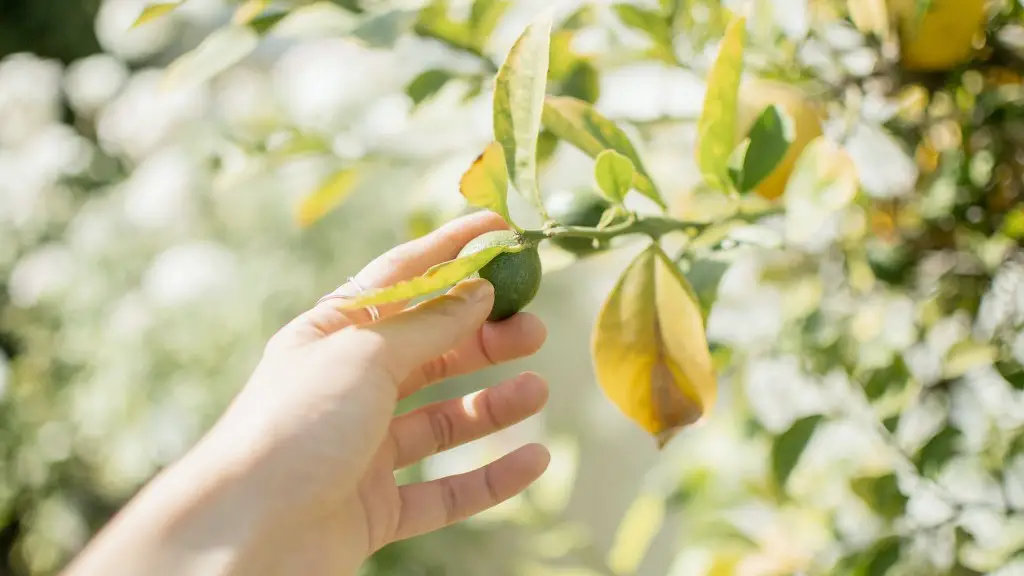Plant Cuttings
Having live plants in your home or garden is a great way to bring life and beauty to any space. One of the best ways to get plants is by taking cuttings from existing plants and using them to start new ones. One of the most common types of cuttings used to start new plants is cherry tree cuttings. Cherry tree cuttings are a great way to propagate new cherry trees quickly and easily. Here is a step-by-step guide on how to root cherry tree cuttings.
Choose the Right Stem
When it comes to cherry tree cuttings, the most important step is choosing the right stem. A healthy stem should be pliable, green and round in shape. It should be free of any blemishes or insect damage. The stem should also be at least 6-8 inches long with an ample number of healthy leaves at the top.
Prepare the Cutting
Once you have chosen a healthy stem, it is time to prepare the cutting for rooting. With a sharp knife or pruning shears, trim off the end of the cutting about an inch or two below a leaf node. The cutting should now be about 4-6 inches in length. Once you have done this, dip the cut end of the cutting in rooting hormone to help promote root growth.
Pot the Cutting
Next, it is time to pot the cutting. Choose a pot with adequate drainage and fill it halfway with a soil that is suitable for cherry trees, such as loam. Make sure the soil is moist but not wet before potting. Once the pot is filled, make a hole in the soil about twice the size as the stem and insert the stem, making sure that the leaf node that was cut is buried. Pack the soil around the stem and water the area lightly.
Care for the Cutting
After potting, the cutting needs to be taken care of. Place the pot in an area that is warm and receives plenty of indirect sunlight, such as a windowsill. Water the cutting regularly to keep the soil moist but not wet. Once the cutting has been in the pot for 6-8 weeks, it should have grown a good root system and be ready to transplant into the garden or a larger pot.
Transplanting and Growing
When it comes time to transplant the cutting, choose a spot in the garden that receives plenty of sunlight and has well-drained soil. Dig a hole that is twice the size as the pot and carefully remove the cutting from the pot. Place the cutting in the hole and pack the soil around it. Lightly water the area and make sure it is firmly packed.
The next step is to care for the newly transplanted Cutting. Water it regularly and make sure it receives plenty of sunlight. Fertilize the soil to give the tree a boost and help promote healthy growth. With the proper care, the cutting should be a thriving cherry tree within a year.
Pruning and Training
When it comes to pruning and training, the main goal is to create a strong, well-branched cherry tree. Once the tree has grown enough branches, it is important to prune away any weak or brittle branches. This will help promote healthy growth and ensure that the tree is growing as best it can.
When training the tree, it is important to shape it in such a way that it is stable and can support the weight of future fruit. To achieve this, branches should be trained to connect to a support stake or trellis. This will help keep the tree upright and ensure that it is able to support future fruit.
Pest and Disease Management
Just like any plant, cherry trees can be susceptible to pests and diseases. It is important to keep an eye out for pests, such as aphids and mites, as well as any signs of disease, such as leaf spots or wilting. If any pests or diseases are found, it is best to take action quickly to reduce the damage and prevent them from spreading.
In addition to pests and diseases, it is important to monitor the tree for any signs of environmental damage. High temperatures and strong winds can both cause damage to the tree, so it is important to take steps to protect the tree as best as possible.
Winterization
In cold climates, it is important to prepare the tree for winter. Before the first frost, it is important to prune the tree and remove any dead or damaged branches. This will ensure that the tree is able to survive the cold winter months. It is also important to mulch around the base of the tree to help insulate the roots and protect them from the cold temperatures.
Fruit Production
Once the cherry tree is established, it is time to start producing fruit. The most important thing to know about cherry tree production is that it takes time. Cherry trees typically take 3-4 years to begin producing fruit, so patience is key.
In addition, cherry trees need plenty of sunlight to produce quality fruit. Make sure the tree is planted in a sunny location and is getting at least 6-8 hours of direct sunlight each day. It is also important to prune the tree regularly to promote good air circulation and healthy growth.
Pollinators
Another important factor in cherry tree production is pollinators. Cherry trees are pollinated by bees and other pollinating insects, so it is important to make sure that your garden is a haven for these helpful creatures. Planting a variety of flowers and shrubs in your garden will help attract pollinators and ensure that your cherry tree produces plenty of quality fruit.


What a joke. Tried for years never works. You failed to mention soil must be at least 65 f. And soil should be warmer than outside air. You people print this nonsense with zero parameters or climate